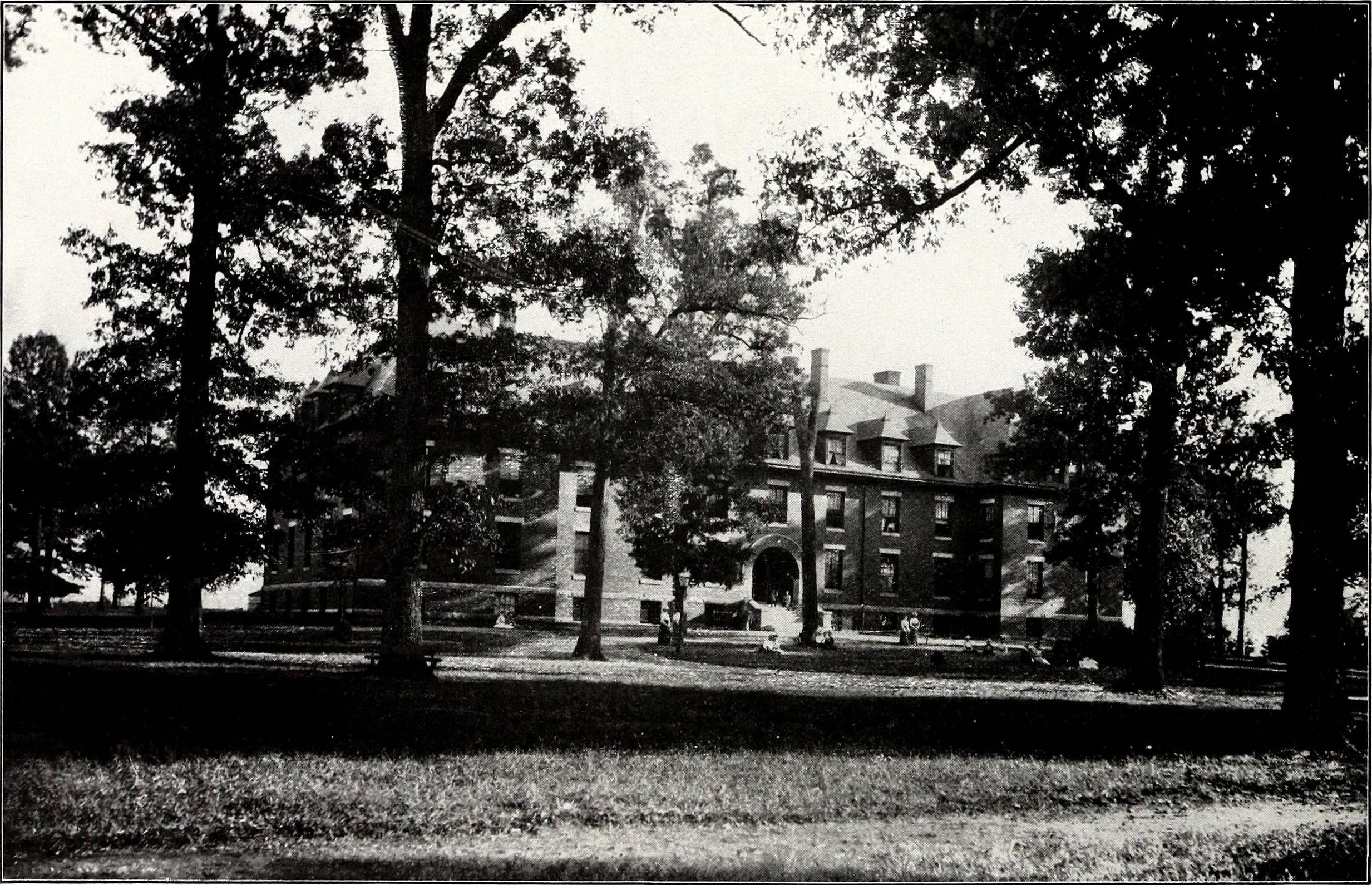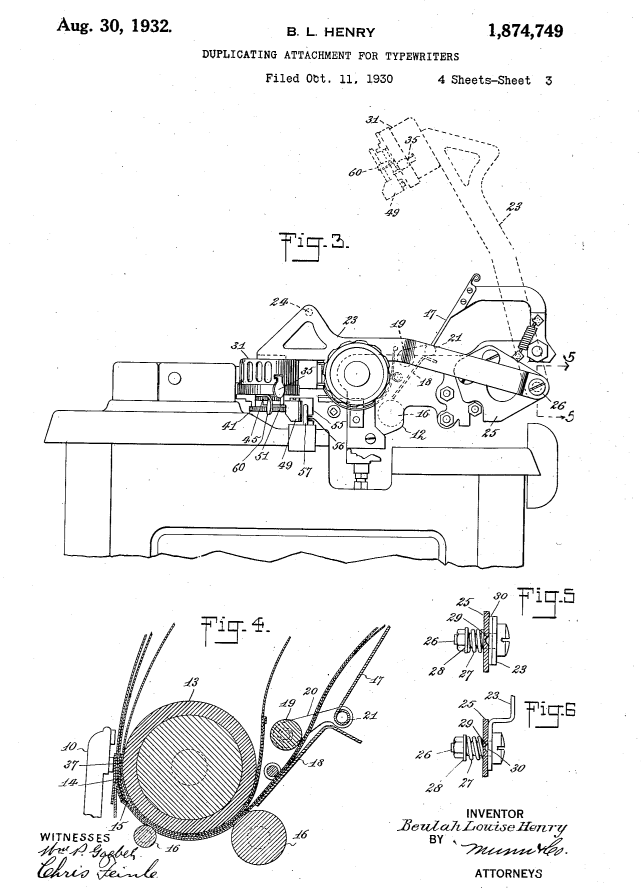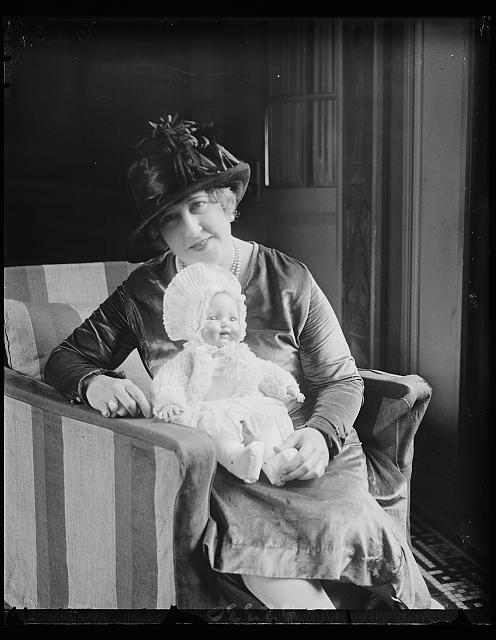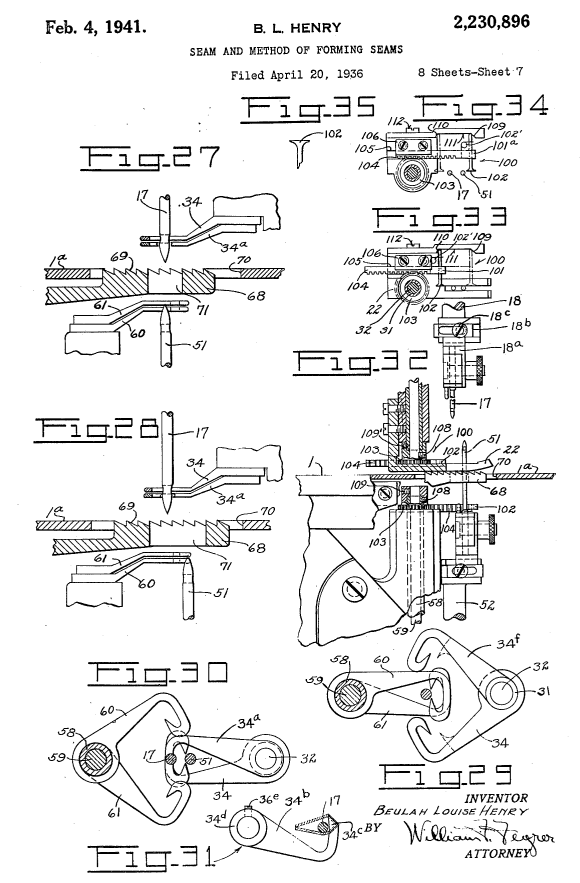
Beulah Louise Henry was a prolific inventor during the twentieth century, receiving 49 U.S. patents and creating more than 100 inventions. In her work, she focused on solving the problems of daily life through cost-effective and easy-to-produce designs. This National Inventor’s Day, let’s explore Henry’s early life and take a look at a few of her notable inventions that vastly improved typewriters, toys, and textile work.
Always Designing with Efficiency and Convenience in Mind
As a child, Beulah Louise Henry noticed a man struggling to read the newspaper and carry groceries while walking. This inspired her to make a prototype of a belt with an attachment for holding the paper. While this particular prototype didn’t make it to the mass market, it foreshadowed Henry’s later work: inventions that made daily life easier.
In 1909, she began her higher education journey at Elizabeth College in Charlotte, North Carolina. She submitted her first patents during this time, and in 1912, the year she graduated, she obtained her first patent for a vacuum-sealed ice cream maker. This machine used minimal ice (a commodity at the time, as there were no household freezers) and doubled as a water cooler.

Elizabeth College in North Carolina. This media file is in the public domain in the United States. This applies to U.S. works where the copyright has expired, often because its first publication occurred prior to January 1, 1929, and if not then due to lack of notice or renewal. Image via Wikimedia Commons.
Carbon Copies, No Smudges Necessary
After developing the ice cream freezer, Henry went on to develop many more inventions, including a parasol with interchangeable snap-on covers and a spring core structure for stuffed animals that allowed them to return to their original shape even after play. However, the first invention by Henry that would bring significant advancements to the working world was related to typewriter technology.
While working, if a typist wanted to make copies of a document, they had to use carbon paper while typing. This produced an original document, and a handful of copies in grayscale. However, the process was messy and left black smudges all over the typist’s hands. Henry, determined to make life more efficient, developed the protograph, an attachment to typewriters that fit an inked ribbon between pages so the typist could make two or more copies without getting their hands dirty.

Patent image of the duplicating typewriter attachment. Source: United States Patent and Trademark Office, www.uspto.gov.
A New Era in Toy Manufacturing
Much of Henry’s genius went toward developing toys to keep children engaged. At the time, toys were seen as tools to prepare children for adulthood. In this vein, Henry invented educational toys, such as the Kiddie Clock to teach children to tell time, but she is best known in the toy field for her multitude of improvements for dolls.
Specifically, she developed a doll that included a voice box and could produce articulate sounds, which later inspired the creation of Radio Rose, a doll that featured a 3-tube receiver and loud speaker. She also developed the Miss Illusion doll, which included interchangeable wigs, a reversible dress, and eyes that changed color and closed. Toy companies rushed to license her designs in the 1930s, adopting these features into thousands of dolls sold across the U.S.

Beulah Louise Henry with a baby doll that incorporated her patented technologies. This image is available from the United States Library of Congress’s Prints and Photographs division under the digital ID hec.34627.
The Penultimate Patent
After making significant contributions to the doll-making industry, Henry focused on optimizing the workflow process for seamstresses and textile workers. Before Henry entered the scene, mass-production-level sewing machines included parts that operated at different speeds, requiring extra mechanisms to account for the separate paces. Additionally, a seamstress required regular breaks to remove the bobbin of thread from under the needle plate of their sewing machine, wind more thread around the spool, and put it back in place. These consistent pauses were inefficient, especially when working at a mass scale.
After being inspired by a chain-link ornamentation around the marquee of a theater outside her window, Henry developed a solution. She designed a bobbinless sewing machine that eliminated the need for constant pauses and strengthened seams via double-chain stitches, making the machine far more suitable for use in mass production. In her patent from the United States Patent and Trademark Office, she explains:
“In many of the so-called lock-stitch machines heretofore provided the various parts of the stitching instrumentalities were operated at different speeds. Consequently costly noisy speed changing mechanism was required, and necessitated using many more operating parts in the machine. The seams of the present invention may be made with a stitching mechanism in which the various parts operate at the same speed thus making possible and a simple, quiet, efficient and economical unit, and dispensing with the need of two-to-one and three-to-one hooks and bobbins.”
Ultimately, Henry removed the need to stop and rewind the bobbins, making textile production faster and far more efficient. Her invention revolutionized crafting professions in the mid-1900s.

Patent image detailing the seam method of the bobbinless sewing machine. Source: United States Patent and Trademark Office, www.uspto.gov.
A Lasting Impression
By the end of her career, Henry had started two companies in New York City; consulted for many more; and had many patents and inventions to her name, leading to her moniker of “Lady Edison”. She was known globally, and in 1937, she had a museum exhibit dedicated to her in Osaka, Japan, which was established as an inspiration to female Japanese inventors. Her designs persist in dolls that can speak or close their eyes, and, most significantly, with sewing machines that require no stopping to wind the bobbin. With all her inventions, Henry enhanced daily work and life and inspired further innovations and improvements to a variety of designs.
Further Reading
Learn more about Beulah Louise Henry from these resources:
- Massachusetts Institute of Technology
- National Inventors Hall of Fame
- North Carolina Department of Natural and Cultural Resources
- Engineering and Technology History Wiki
- The United States Patent and Trademark Office (USPTO)
Read about other inventors on the COMSOL Blog:
- Marie Van Brittan Brown, inventor of the home security system
- Angelo Moriondo, creator of the first espresso machine
- Jacob Perkins, known as the “Father of the Refrigerator”




Comments (0)